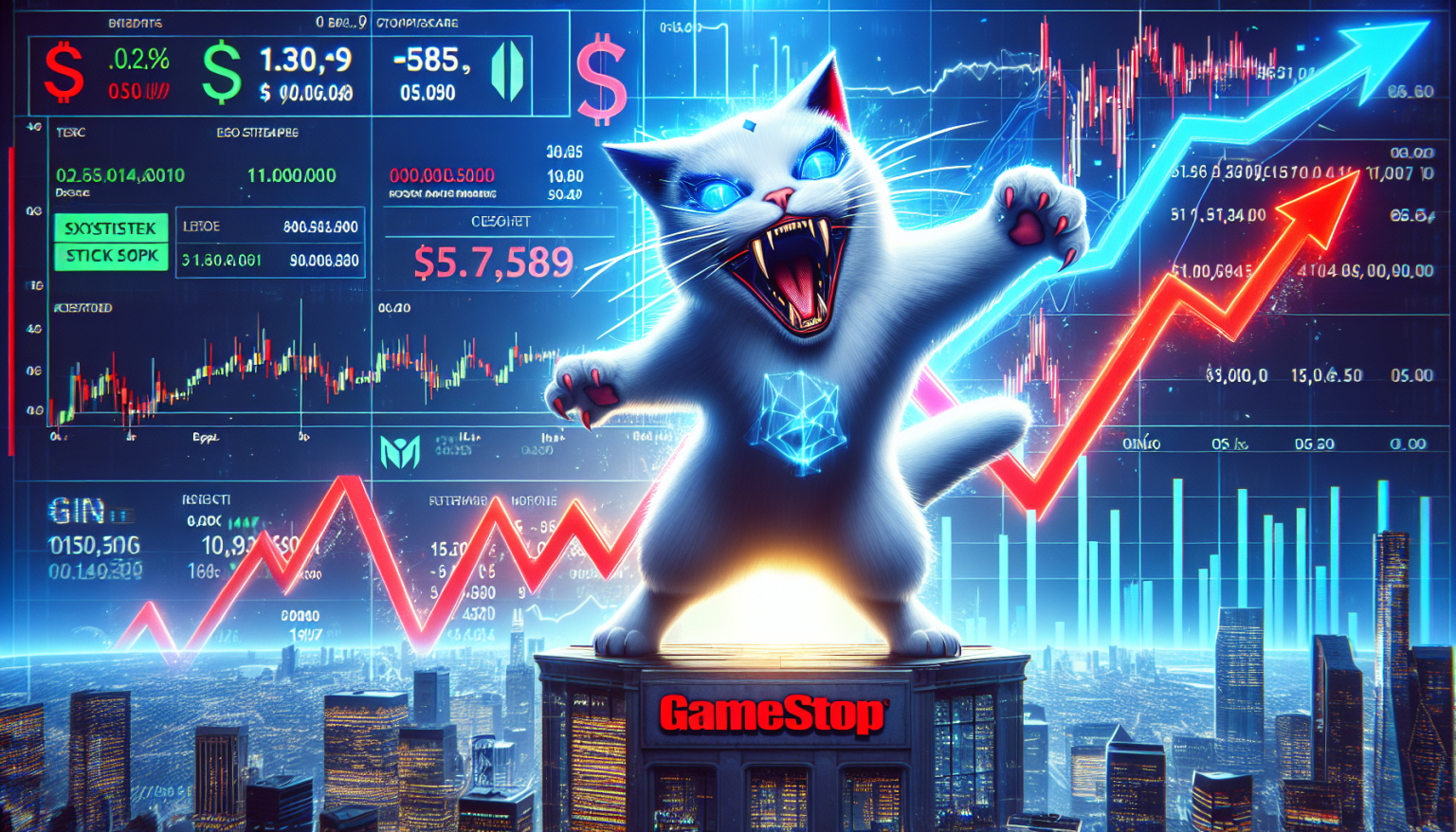GameStop Corp. (GME) has once again captured the attention of retail investors as its stock defied expectations, climbing above $27 in early October 2025. This marks a significant recovery from its 52-week low of $20.30, a surge driven primarily by social media buzz and enthusiastic retail trading.
On October 3, GameStop completed an 11-for-10 stock split and distributed warrants to shareholders, creating new trading opportunities. This strategic move involved offering one warrant per ten shares held, with a strike price set at $32, which is approximately 24% above the current trading level.
As of October 2, GME shares closed at $27.22, resulting in a market capitalization of around $12.2 billion. Trading volumes saw a notable spike, with 14.5 million shares exchanging hands on that date, well above the daily average of 8.6 million. This renewed interest signifies a robust enthusiasm among retail traders.
Further enhancing investor excitement was the announcement from Roaring Kitty, legally known as Keith Gill. He revealed a staggering $115.7 million stake in GameStop shares, complemented by an additional $65.7 million in call options expiring in June 2026. His return to the forefront of this meme stock narrative has sparked a revival reminiscent of the fervor seen during the 2021 trading frenzy.
Fundamentals Support Stock Rally
GameStop’s recent financial performance has provided a solid foundation for this rally. In Q2 2025, the company reported revenues of $972.2 million, showcasing a remarkable 21.8% year-over-year increase, with net income reaching $168.6 million. This exceeds analyst expectations, as most had forecast revenues around $823 million. Additionally, the earnings per share jumped to $0.25, dramatically outperforming predictions of $0.16.
The company has strategically shifted its focus toward high-margin categories, with collectibles and pop-culture merchandise overtaking traditional game sales. Furthermore, a recent Pokémon distribution event at GameStop stores boosted traffic and engagement, fostering a reconnection with its primary gaming clientele.
A Landscape of Opportunities and Risks
GameStop’s current financial health is notable, boasting about $8.7 billion in cash and marketable securities, including a substantial investment in Bitcoin. This strong balance sheet enables the company to navigate market fluctuations and explore new avenues for growth. Moreover, with a current ratio of 11.4 and a debt-to-equity ratio of 0.80, GameStop shows minimal leverage, positioning itself favorably in challenging times.
However, the stock faces significant short interest, with approximately 66.8 million shares sold short, translating to about 15% of its float. This high short interest creates potential for another short squeeze, especially with any favorable news, which could force short sellers to cover their positions and propel prices even higher.
Despite the excitement, Wall Street analysts remain cautious, with a consensus rating of Sell and an average price target around $13.50. Notably, all surveyed analysts on Public.com have rated GME as a Sell, indicating skepticism about its future potential.
Ultimately, GameStop’s October rally underscores the enduring influence of retail investors and the power of social media platforms like Reddit’s WallStreetBets in driving stock prices. As the company continues to adapt and innovate, it remains to be seen whether the momentum can be sustained in the face of prevailing market skepticism.

